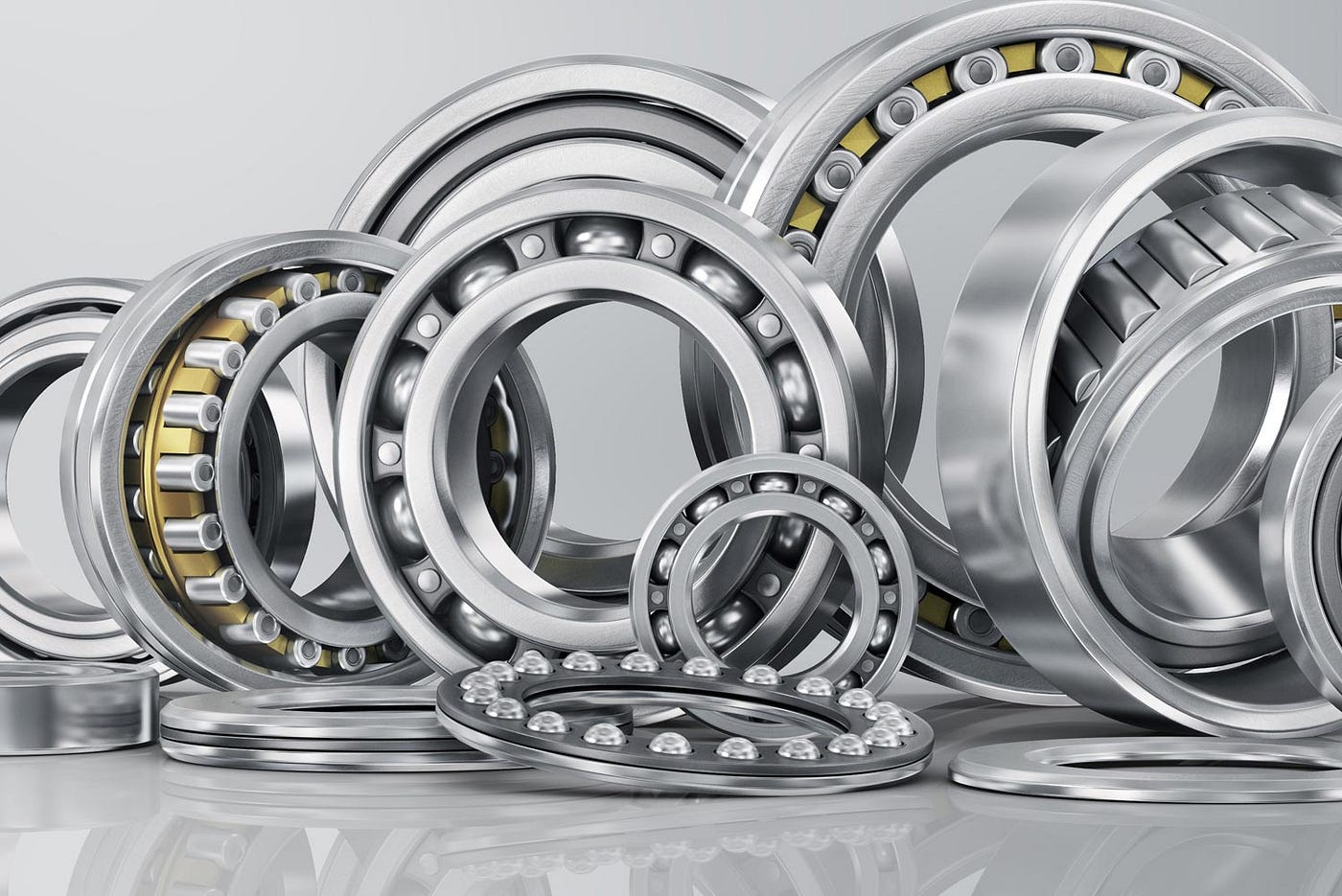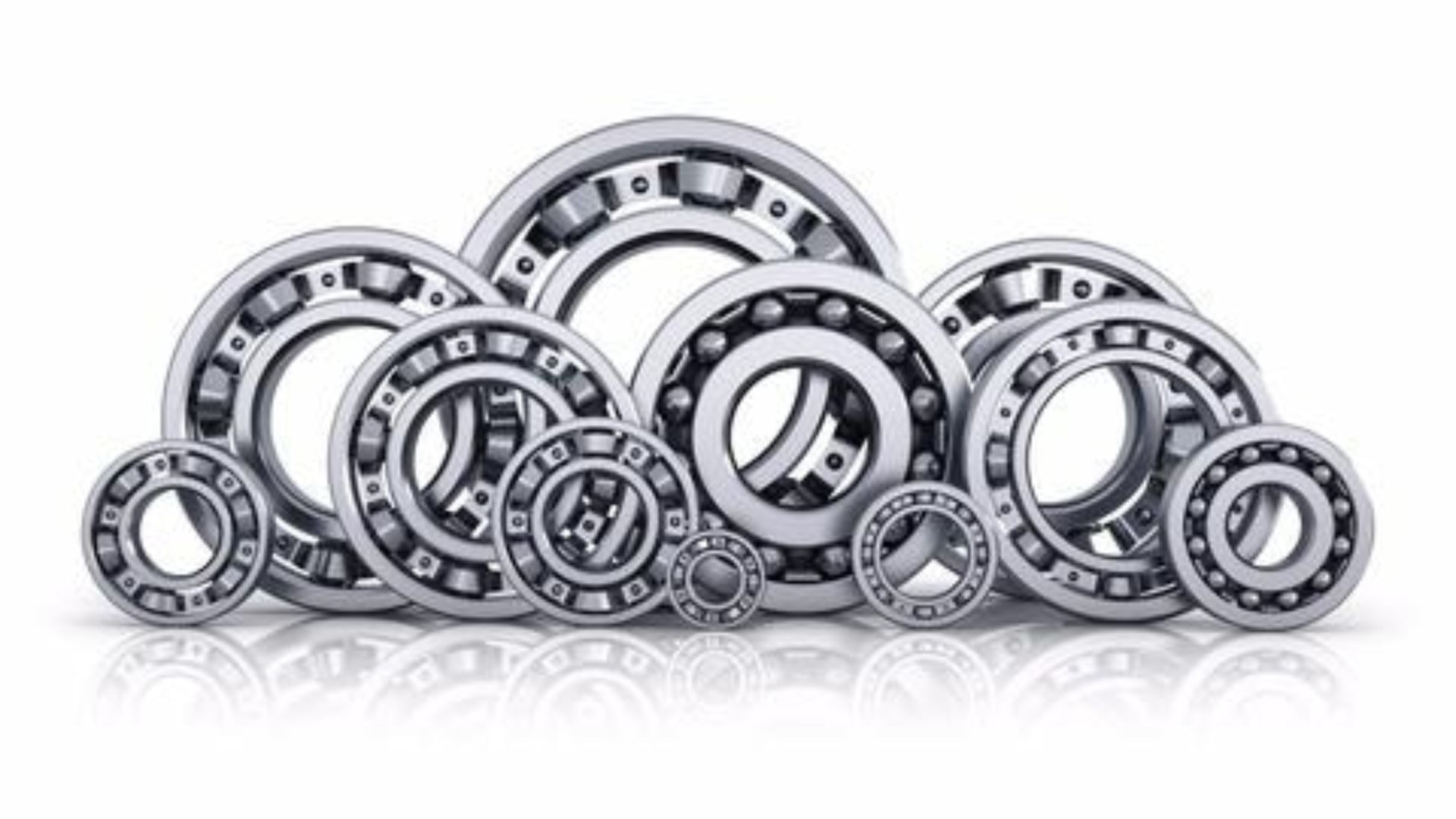The 4-Minute Rule for Volution Bearing
The 4-Minute Rule for Volution Bearing
Blog Article
Volution Bearing Fundamentals Explained
Table of ContentsGetting My Volution Bearing To WorkUnknown Facts About Volution BearingHow Volution Bearing can Save You Time, Stress, and Money.Everything about Volution Bearing
An axial (or thrust) bearing lots is when pressure is alongside the axis of the shaft. A radial bearing lots is when pressure is perpendicular to the shaft. A combination bearing tons is when parallel and perpendicular forces produce an angular force relative to the shaft. Sphere bearings are made with round spheres and can disperse loads over a medium-sized surface.Below is a quick referral for the type of bearing load and the very best sphere bearing for the job: Radial (vertical to the shaft) and light lots: Choose radial sphere bearings (additionally referred to as deep groove ball bearings). Radial bearings are some of the most common sorts of bearings on the market.
Roller bearings are developed with round rollers that can disperse loads over a larger surface area than sphere bearings. Below is a fast referral for the type of birthing tons and the best roller bearing for the work: Radial (vertical to the shaft) tons: Choose conventional round roller bearings Axial (propelled) (parallel to the shaft) lots: Pick round thrust bearings Integrated, both radial and axial, loads: Select a taper roller bearing The rotational rate of your application is the following variable to look at when selecting a bearing.
They execute far better at higher rates and supply a greater speed range than roller bearings. One reason is that the contact between the rolling component and the raceways in a sphere bearing is a point rather than a line of get in touch with, like in roller bearings. Since rolling aspects press into the raceway as they roll over the surface area, there is much less surface area deformation happening in the point loads from ball bearings.
The Volution Bearing Statements

If this occurs, an easy and common remedy is to change the round bearing product from steel to ceramic. This maintains the bearing dimension the same but uses about a 25% higher speed score. Because ceramic product is lighter than steel, ceramic rounds create much less centrifugal pressure for any given speed.
One factor is that the spheres are smaller sized and smaller balls consider much less and produce much less centrifugal force when rotating. Angular call bearings also have a built-in preload on the bearings which deals with centrifugal forces to correctly roll the balls in the bearing. If you are creating a high-speed application, after that you'll desire a high-precision bearing, generally within the ABEC 7 precision class.
The Best Strategy To Use For Volution Bearing
When the bearing is being made use of at high speeds, the rounds quickly roll over the bearing raceway with less reliability which can lead to a bearing failure. High precision bearings. bearings are manufactured with strict requirements and have very little deviation from the specifications when created. High accuracy bearings are reputable for applications that go quickly because they make certain great sphere and raceway communication.
Some applications, like reducing tool spindles, will only allow a small variance to occur on its revolving parts. If you are engineering an application such as this, after that pick a high precision bearing due to the fact that it will certainly generate smaller sized system runouts due to the tight tolerances the bearing was produced to. Bearing rigidity is the resistance to the force that creates the shaft to differ its axis and plays a key duty in reducing shaft runout.

When the angular get in touch with bearings are mounted, the balanced out is gotten rid of which causes the spheres to push into the raceway without any outdoors application pressure. This is called preloading and the process increases bearing rigidness also prior to the bearing sees any type of Website application pressures.
Excitement About Volution Bearing
Lubrication produces a movie of oil in between the rolling component and the bearing raceway that assists stop friction and overheating. One of the most common kind of lubrication is grease, which includes an oil with a thickening agent. The thickening agent keeps the oil in area, so it will not leave the bearing.
After the rolling element goes by, the oil and thickening agent join back with each other. For high-speed applications, knowing the rate at which the oil and thickener can separate and rejoin is important. This is called the application or bearing n * dm worth. Before you pick an oil, you require to find your applications ndm value.
Contrast your ndm worth to the grease's max rate worth, situated on the datasheet. If your n * dm value is greater than the oil max speed worth on the datasheet, after that the oil won't have the ability to offer enough lubrication and early failing will occur. One more lubrication option for high-speed applications are oil haze systems which blend oil with compressed air and after that inject it into the bearing raceway at metered periods.
Report this page